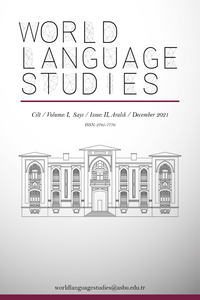Paulo Freire’nın Ezilenlerin Pedagojisi Adlı Kitabından Eğitim Paradigması Üzerine Bir İnceleme
Paulo Freire hayatı boyunca kendini eğitime adamış, toplumda eğitim imkanlarından yararlanamayan insanlara okuma yazma öğretmek için çeşitli çalışmalar yapan yazar ve bir eğitim felsefecisidir. Freire, Ezilenlerin Pedagojisi kitabında da hayatında deneyimlediği olayları ve özellikle okullarda uygulanan iki eğitim modeli olan bankacı eğitim modeli ve problem tanımlayıcı eğitim modeli üzerine örnekleri ve karşılaştırmalarını vermiştir. Freire, bir ezberci eğitim modeli olan bankacı eğitim modelini reddedip bu modele alternatif olarak ortaya çıkan etkileşimin yer aldığı problem tanımlayıcı modeli destekler. Bankacı eğitim modelinde öğrenciler edilgendir ve öğretmenler aktiftir. Öğrenciler tepki vermeden ve herhangi bir itirazda bulunmadan öğretilenleri öğrenme eğilimdedirler. Öte yandan problem tanımlayıcı eğitim modelinde ise öğrenci aktiftir. Öğretmen merkezli değil öğrenci merkezli bir öğrenme ortamı vardır. Bu modelde sadece öğretmen öğretir, öğrenci öğrenir ilkesinin aksine; öğrenci de öğretir, öğretmen de öğrenir düşüncesi hakimdir. Bu eğitim modelleriyle bağlantılı olarak eğitim faaliyetlerinde ise ‘Diyalogcu’ ve ‘Diyalog Karşıtı’ iki durum karşımıza çıkar. Bankacı eğitim modelinde öğrenen pasif ve ‘nesne’ konumunda olduğu için ‘Diyalog Karşıtı’ bir eğitim faaliyeti söz konusudur. Diğer taraftan problem tanımlayıcı modelde ise ‘Diyalog’ eğitimde aranan bir faaliyettir ve burada öğrenen kişi ‘özne’ konumunda ve aktiftir. Freire’a göre etkileşimin olmadığı ortamda özgürleşmenin de mümkün olması mümkün değildir.Bu konuyla bağlantılı olarak Freire, insandışılaşmanın tarihten süregelen bir durum olduğunun üzerinde durur. İnsandışılaşma sürecinde insanlığı çalınmış olanların yanı sıra, insanlığını çalmış olanları da içine alan bir terim olarak kullanır. ‘İnsanlaşma mücadelesi’ olarak tanımlanan bu yolculukta ezilenlerin görevi kendilerini ve aynı zamanda ezenlerini özgürleştirmektir.
Anahtar Kelimeler:
Bankacı Eğitim Modeli, Problem Tanımlayıcı Eğitim Modeli, Ezenler, Ezilenler, Özgürleşme, İnsandışılaşma
An Analysis on the Paradigm of Education form Paulo Freire’s Pedagogy of the Oppressed
Paulo Freire is a writer and philosopher of education who has devoted himself to education throughout his life, working to teach literacy to people who cannot benefit from education in society. In his book Pedagogy of the Oppressed, Freire gives examples and comparisons of the events he experienced in his life, especially the two models of education practiced in schools: the banker model of education and the problem-solving model of education. Freire rejects the banker model of education, which is a rote memorization model of education, and supports the problem posing model, which is an alternative to this model. In the banker model of education, students are passive and teachers are active. Students tend to learn what is taught without reacting or objecting. On the other hand, in the problem definition model of education, students are active. There is a student-centered learning environment, not a teacher-centered one. In this model, contrary to the principle that only the teacher teaches and the student learns, the idea that the student teaches and the teacher learns is dominant. In connection with these educational models, we encounter two 'Dialogist' and 'Anti-Dialogist' situations in educational activities. In the banker education model, there is an 'Anti-Dialogic' educational activity since the learner is passive and in the 'object' position. On the other hand, in the problem definition model, 'Dialogue' is a sought-after activity in education and here the learner is in the 'subject' position and active. According to Freire, liberation is not possible in an environment where there is no interaction. In connection with this issue, Freire emphasizes that dehumanization is an ongoing situation from history. In the process of dehumanization, he uses it as a term that includes those whose humanity has been stolen as well as those who have stolen their humanity. In this journey, defined as the 'struggle for humanization', the task of the oppressed is to liberate themselves and their oppressors at the same time.
Keywords:
Banker Education Model, Defininig Education Model, Oppressors, Oppressed, Emancipation, Dehumanization,
___
- Aksakallı, A. (2019). Eleştirel Pedagojiye Yönelik Öğretmenlerin Eğitim İnançları. Eğitimde Nitel Araştırmalar Dergisi, 7(2), 583-605.
- Arı, B.,M. (2021). Eğitim Felsefesinde Eğitimin Amacı ve Öğretmenin Rolü: Freire Çerçevesinde Özgürlüğün Praksisi ve Bankacı Eğitim Modelinin Kritiği, İstanbul: İstanbul Üniversitesi, (Yüksek Lisans Tezi).
- Aybar, Ö. & BİNGÖL, K. Z. (2020). Paulo Freire’de Bankacı Eğitim Modeline Karşı Problem Tanımlayıcı Eğitim Modeli. International Anatolian Journal of Social Sciences, 4(4), 307-323.
- Akto, A. & Aydın, M. (2021). Paulo Freire ve Eğitim Felsefesi. Şarkiyat İlmi Araştırmalar Dergisi, 13, (3), 1176-1191.
- Çepni, S. (2021). Martin Buber ve Paulo Freire Bağlamında Diyalektik İlişkiden Diyalojik İlişkiye. International Journal of Social and Educational Sciences, 3(5), 213-238.
- Freire, P. (2010). Ezilenlerin Pedagojisi. (çev., Dilek Hatipoğlu ve Erol Özbek). Türkiye: Ayrıntı Yayınları
- Güngör, S. (2014). Eğitim ve Eğitim Yönetiminde Paradigmalar. Kafkas Eğitim Araştırmaları Dergisi, 1 (3), 26-40.
- Hoepfl, M. C. (1997). Choosing Qualitative Research: A Primer for Technology Education Researchers. Journal of Technology Education, 9(1),47-63.
- Merriam, S. H. (2009). Qualitative Reseach. A Guide to Design and Implementation. Jossey-Bass.
- Şahinkaya, A. (2022). Paulo Freire’nin Eleştirel Eğitim Felsefesi Zemininde Çocuklarla Felsefe, Bursa: Uludağ Üniversitesi, (Yüksek Lisans Tezi).
- Yılmaz, Z. (2016). Paulo Freire’nin Felsefesinde Özgürleşmenin Aracı Olarak Eğitim. FLSF Felsefe ve Sosyal Bilimler Dergisi, 22, 299-313.
- Başlangıç: 2021
- Yayıncı: Ankara Sosyal Bilimler Üniversitesi
